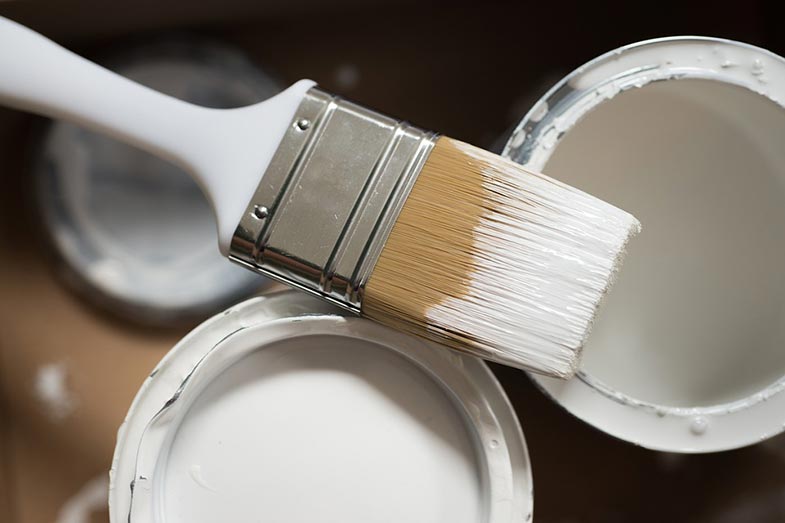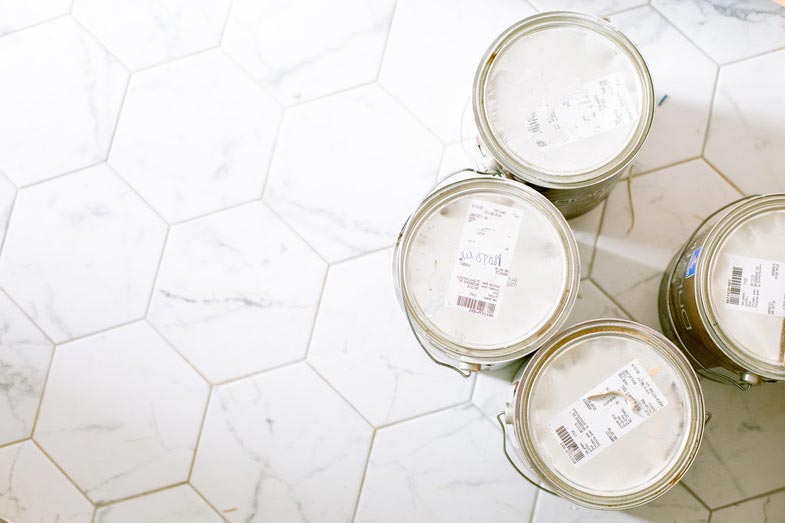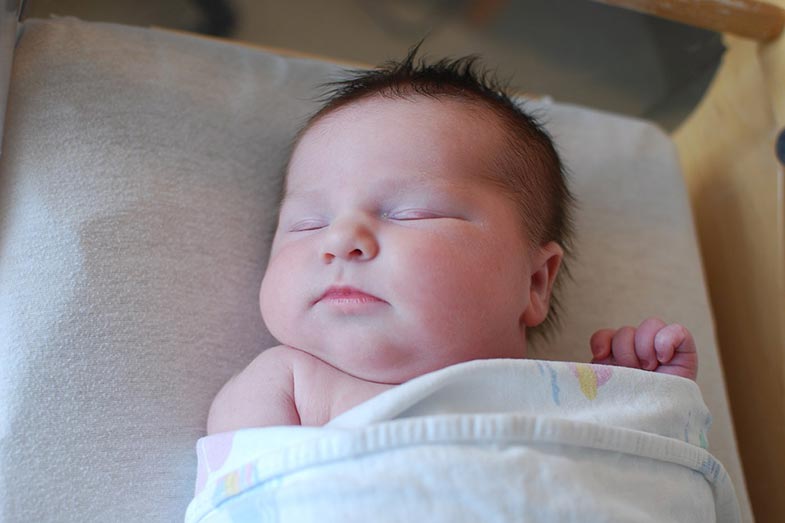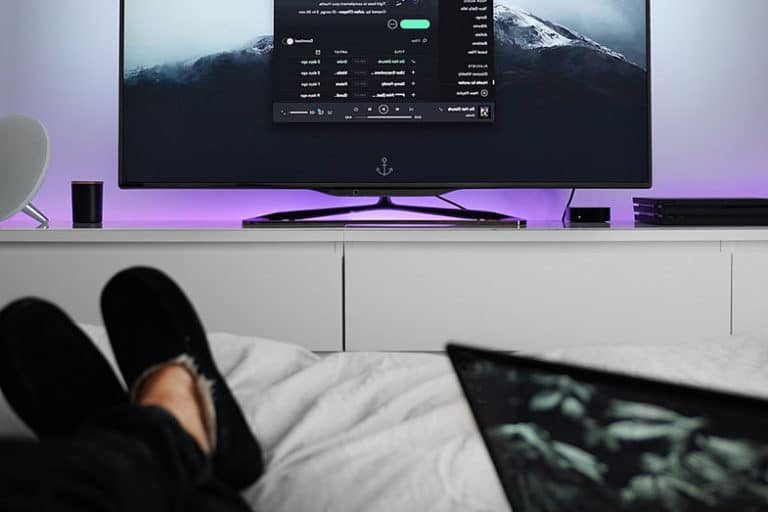How Long After Painting a Room Is It Safe for a Baby to Sleep In?
Disclosure: We may get commissions for purchases made through links in this post.
While painting is a common home improvement project that adds to the curb appeal of any home, most parents are very concerned about the safety of their children. Paint can be dangerous, especially in homes where there are children. Typically, it is possible for you to withstand the paint fumes odors; however, you will want to be mindful if you are choosing paints for decorating your little one’s room. Using paints that emit toxic odors could cause adverse health effects to your children.
How long after painting a room, is it safe for a baby to sleep in? The duration for which to wait after painting a room will depend on the type of paint used. Some paints dry quickly, which reduces exposure to VOCs, while others take a lot of time to dry.
As a parent, you need to identify which paints are safe for your child and which ones emit dangerous fumes. In this article, we are going to learn about paints that are extremely safe for children and how long it will take for the room to be considered safe for the child to sleep in.
Things to Keep in Mind When Choosing Paints for Your Child’s Room

1. Type of Paint
There are different types of paints available in the market. The type of paint you choose will determine how much paint fumes will be released once you apply them.
- Zero-VOC Paint
The best paint for a child’s room is one that is labeled ‘Zero VOC.’ Volatile Organic Compounds (VOCs) are chemical gases that can have adverse health effects like nose and eye irritation and nausea. Volatile Organic Compounds can also cause long term health effects like damage to the liver, central nervous system, and kidneys. The zero-VOC paint contains no VOC and does not release toxic chemicals. It is also nearly odorless because it has a much lower smell limit concentration than other types of paint. This, therefore, means that you or your child can sleep in the room the same day after painting it. There is no need to wait over 24 hours for your baby to sleep in the room. - Low-VOC Paint
Low VOC paints have a ‘Green seal’ logo, and it is entirely safe to sleep in the same room after applying the paint. However, some studies show that children sleeping in rooms with fumes from low-VOC water-based paints are 2 to 4 times more likely to get allergies or asthma. Low VOC paints may contain PGEs, which can be damaging to your child’s health. Also, while the paint has few VOCs, it is not entirely odorless, and the smell could last for 2-3 days after painting. It is therefore recommended to keep the room well ventilated when the paint is applied. - Oil-Based Paints
Oil-based paints have mineral oil and are common for outdoor use. This is because they dry hard and can withstand moisture. Although the paint dries within 2-8 hours, it contains lots of toxic VOCs, which could take two weeks to decrease. The VOCs are harmful and could produce adverse health effects like allergic reactions, headaches, as well as eye and sinus irritation.
Also, when swallowed, they can cause stomach upset and breathing problems caused by the presence of the mineral oil in the lungs. This means that you should wait for at least two weeks for the paint to cure before sleeping in the room. - Latex Paints
Latex paint dries quickly, and it is easy to wash with just soap and water. Nonetheless, it causes mild irritation on the skin and mouth, although, if someone swallows, it causes stomach upset or vomiting. Small pieces of latex paint can also cause choking. Nonetheless, it is not very lethal, and it doesn’t poison the body. - Solvent-Based Paint
Solvent-based paint is not a safe option to paint a baby’s room since it is more harmful than oil-based paint and latex. These paints contain several volatile organic compounds (VOC) like xylene, toluene, and ethanol as a liquid. When using solvent-based paint in a poorly ventilated room, symptoms may occur, such as headaches, nausea, and dizziness. Also, this paint can be lethal if inhaled with the intention to get high. - Organic Paint
The organic paint is completely non-toxic, and it doesn’t produce or emit any dangerous fumes. Although these paints are not as durable as other conventional paints, they are safer in terms of VOCs.
2. Check the Labels
When choosing paint for indoor use, you need to carefully look at the label and ensure that the product is safe enough for children. Although most products that are labeled ‘non-toxic’ may appear harmless, they may pose a risk of poisoning after long-term use. Looking for the ‘AP’ label, especially for art paint, will assure you that the product is safe for children.
3. Painting Procedure
When using paint that emits harmful VOC fumes, it is essential to choose the appropriate time for painting when you can open the windows for 2-3 days during and after application. Avoid times like summer and winter when you cannot leave your doors and windows open or even use a fan.
4. Safety Precaution
Make sure that your children are not in freshly painted rooms when the VOC fumes are most intoxicating. If possible, take them to a friend or relative for some days until the smell of fresh paint decreases. Another safety precaution is using a box fan or air purifiers to direct the fumes outside. If you reside in an apartment complex, be sure to alert other tenants since the paint fumes could be harmful to them also.
Safe disposal of old/remaining paint is important, and it depends on where one lives. In most countries, oil and solvent-based paints are disposed of as hazardous materials. For water-based paint, you need to let the paint dry out first and then discard the can together with other household items. Before you dispose of your old paint, check your countries or local regulations.
The Risks of Paints

When working with paints, be aware of the following risks.
- Respiratory problems – This is mostly caused by applying paint indoor without enough ventilation.
- Skin problems, including burns, irritations, and dermatitis.
- Sensitization can occur as a result of too much exposure to paint fumes. When a person becomes sensitive, even a small amount of allergen can lead to a serious allergic response.
- Life-threatening problems like neurological disorders and cancer
Symptoms Caused by Paint Fuming Poisoning
- Allergic skin reaction
- Irritation of nose, eyes, and throat
- Nausea
- Coughing
- Breathing difficulties
- Sore eyes, nose, and/or throat
- Dizziness and loss of coordination
- Headaches
- Visual impairment and memory loss
- Fatigue
Actions to Take when your Child Gets any Symptoms from the Paint Fumes
Here are some actions to take when your child shows the symptoms that occur due to paint fume poisoning:
- Keep the sick child off the room that has been painted and ventilate the room well.
- Seek medical help for the symptoms.
- If paint of any kind gets on the skin, wash it with water and soap. Avoid paint removers as these can irritate the skin.
- If paint is swallowed, give the victim a small amount of milk or water. The swallowed paint will be eliminated in a day or two through stool.
- If paint gets into eyes, rinse it off with running water for about 15-20 minutes. Contact Poison Control if you experience pain or have trouble with vision.
- If you cannot leave the windows and doors open for a long time, then you can opt to paint Little Knights once the old paint has dried up. Applying Little Knights paint is a clever strategy since it will seal the noxious paint and prevent the emitting of VOCs.
Prevention Tips
- When painting, ensure that there is enough circulation in the room by opening the windows and doors open if possible. If you feel dizzy or nauseous, leave the room for a while and get some fresh air. If this doesn’t help, take a warm shower and wash down your hair.
- Only use interior paints when painting your home or other indoor facilities. Do not use paints that are meant for commercial use because they contain harmful ingredients like fungicides.
- Get immediate help if you suspect that someone has accidentally or intentionally inhaled the paint.
Can I Paint the Room and Have My Newborn Sleep in It on the Same Day?

Ideally, you’ve already decided on a color scheme that you want and have for the room or nursery a few months before your baby is born. This means the paint has had time to dry, and there are no more fumes, not even a faint smell of fresh paint. You’ve been able to air out the room, and you’ve decorated it in preparation for your little one’s arrival. But what if you waited until the last minute because you couldn’t decide until you knew the baby’s gender? If you need to paint the room when your baby is already at home, will it be safe for your newborn?
Your baby is beautiful and perfect but also extremely sensitive to the environment. The skin is very delicate and vulnerable to outside impurities. Lungs are still developing, and the immune system hasn’t had a chance to build up resistance yet, especially to chemicals, no matter how mild they may be. If you expose your baby to paint, even a no VOC one, what do you think will happen?
Experts say that many paints today are different from what was used before. There are no more harmful chemicals, and the smell is almost non-existent, if you know which ones to buy and use. There are different compositions to assure you that it is safe, like water-based, zero VOCs, low VOCs, and others.
Not Worth the Risk
However, do you really want to place your baby’s health at risk for the sake of having a more colorful nursery? Are you prepared to deal with possible asthmatic or allergic attacks that may result in having your baby sleep in a newly painted room? Remember that the effect may not be immediate or even detectible. What if your little one develops symptoms a few weeks, months, or even years after, and you had no idea that it was from the paint? Two years down the road when you are at a doctor’s office, would you be able even to think that whatever your toddler is experiencing may be the result of that new paint? Probably not. And there is nothing to say that it will happen but again, so why risk it?
If you’ve already painted the room while your baby is at home, take the extra precaution. It is always better to be safe than sorry. Give it a few days, make sure the room is well ventilated by opening windows and switching on fans. This will allow the fumes and smell to dispel. If there is another room for your baby to sleep in, that will be a much better choice. If you have a crib or a bassinet, you can bring it in your room and have the baby sleep there. In case you’re living in a one-room apartment and you’ve just painted it, try asking friends or family if you can stay with them for a couple of nights, just until you’re sure that the newly painted room will not put your baby’s health at risk.
Conclusion – How Long After Painting a Room Is It Safe for a Baby to Sleep In?
The question of how long to wait after painting your children’s room is often asked by many parents who are planning to undertake painting projects. Just as we have seen above, there are different answers to this question, depending on which paint you use. With children’s safety in mind, it is important to choose a paint that contains no or low VOCs. This way, you can be sure that your children will be safe even if they sleep in the room on the same day of application. Parents are also advised to keep their windows open when painting the rooms.






